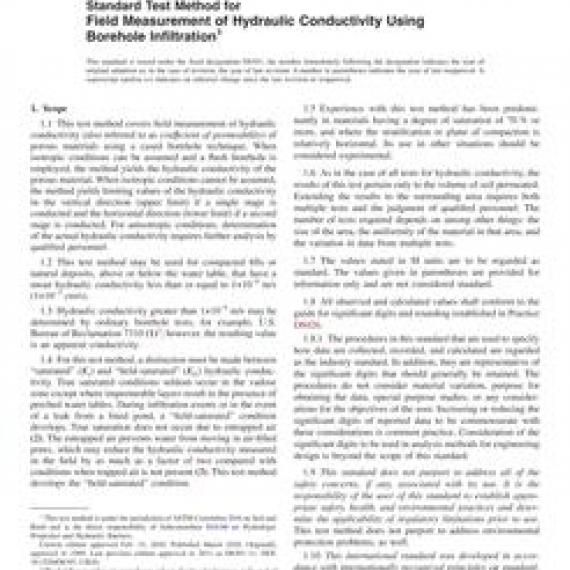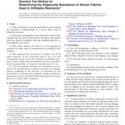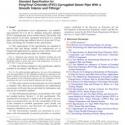No products
ASTM D6391-11(2020)
ASTM D6391-11(2020) Standard Test Method for Field Measurement of Hydraulic Conductivity Using Borehole Infiltration
standard by ASTM International, 02/15/2020
Full Description
1.1This test method covers field measurement of hydraulic conductivity (also referred to as coefficient of permeability) of porous materials using a cased borehole technique. When isotropic conditions can be assumed and a flush borehole is employed, the method yields the hydraulic conductivity of the porous material. When isotropic conditions cannot be assumed, the method yields limiting values of the hydraulic conductivity in the vertical direction (upper limit) if a single stage is conducted and the horizontal direction (lower limit) if a second stage is conducted. For anisotropic conditions, determination of the actual hydraulic conductivity requires further analysis by qualified personnel.
1.2This test method may be used for compacted fills or natural deposits, above or below the water table, that have a mean hydraulic conductivity less than or equal to 110-5 m/s (110-3 cm/s).
1.3Hydraulic conductivity greater than 110-5 m/s may be determined by ordinary borehole tests, for example, U.S. Bureau of Reclamation 7310 (1)2; however, the resulting value is an apparent conductivity.
1.4For this test method, a distinction must be made between saturated (Ks) and field-saturated (Kfs) hydraulic conductivity. True saturated conditions seldom occur in the vadose zone except where impermeable layers result in the presence of perched water tables. During infiltration events or in the event of a leak from a lined pond, a field-saturated condition develops. True saturation does not occur due to entrapped air (2). The entrapped air prevents water from moving in air-filled pores, which may reduce the hydraulic conductivity measured in the field by as much as a factor of two compared with conditions when trapped air is not present (3). This test method develops the field-saturated condition.
1.5Experience with this test method has been predominantly in materials having a degree of saturation of 70% or more, and where the stratification or plane of compaction is relatively horizontal. Its use in other situations should be considered experimental.
1.6As in the case of all tests for hydraulic conductivity, the results of this test pertain only to the volume of soil permeated. Extending the results to the surrounding area requires both multiple tests and the judgment of qualified personnel. The number of tests required depends on among other things: the size of the area, the uniformity of the material in that area, and the variation in data from multiple tests.
1.7The values stated in SI units are to be regarded as standard. The values given in parentheses are provided for information only and are not considered standard.
1.8All observed and calculated values shall conform to the guide for significant digits and rounding established in Practice D6026.
1.8.1The procedures in this standard that are used to specify how data are collected, recorded, and calculated are regarded as the industry standard. In addition, they are representative of the significant digits that should generally be retained. The procedures do not consider material variation, purpose for obtaining the data, special purpose studies, or any considerations for the objectives of the user. Increasing or reducing the significant digits of reported data to be commensurate with these considerations is common practice. Consideration of the significant digits to be used in analysis methods for engineering design is beyond the scope of this standard.
1.9This standard does not purport to address all of the safety concerns, if any, associated with its use. It is the responsibility of the user of this standard to establish appropriate safety, health, and environmental practices and determine the applicability of regulatory limitations prior to use. This test method does not purport to address environmental protection problems, as well.
1.10This international standard was developed in accordance with internationally recognized principles on standardization established in the Decision on Principles for the Development of International Standards, Guides and Recommendations issued by the World Trade Organization Technical Barriers to Trade (TBT) Committee.


































